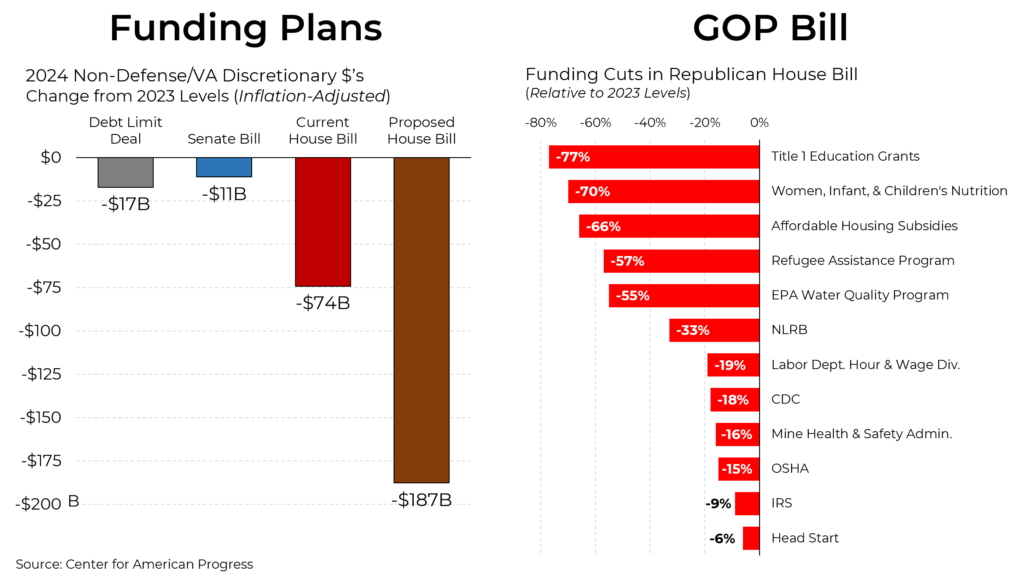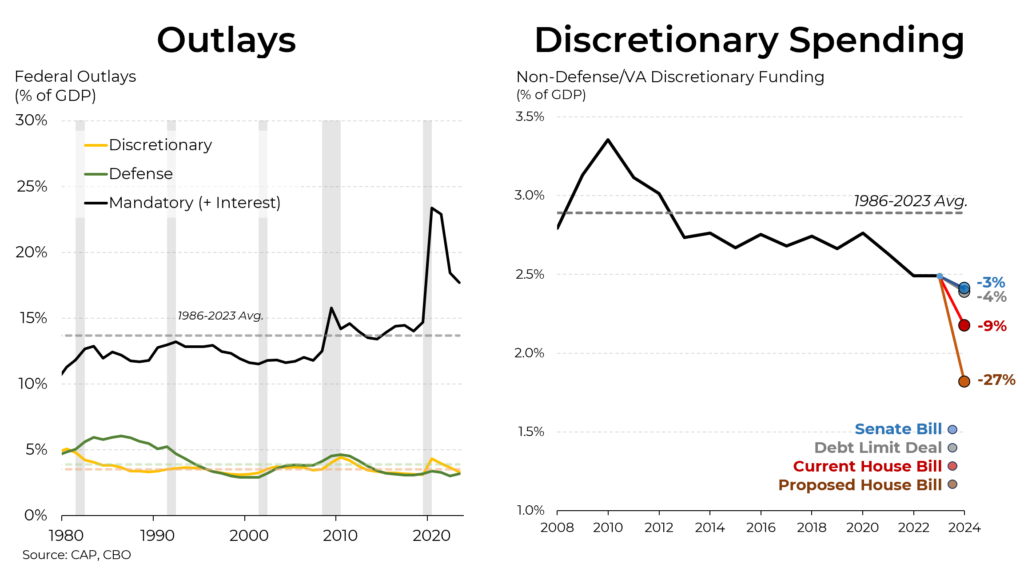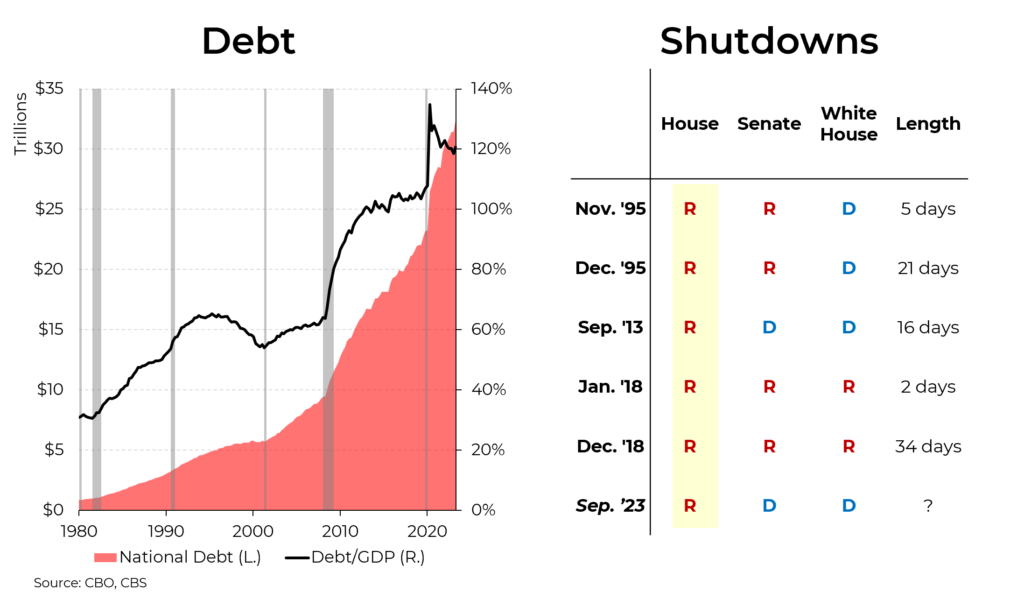The federal government is careening toward a shutdown as soon as Saturday night. Why is this happening so soon after Republicans and Democrats were supposed to have resolved their fiscal differences during the debt ceiling drama less than four months ago? The short answer: because the hard-right Republicans decided to ignore that agreement.
In the compromise that raised the nation’s debt limit, the two sides agreed to reduce non-defense discretionary spending for the fiscal year that begins on Sunday by $17 billion (after adjusting for inflation). For their part, both Senate Democrats and Republicans have agreed on a temporary spending package until November 17 that would involve slightly smaller cuts than what was previously agreed to because they added back small expenditures for agriculture, military construction, transportation, and housing. On the House side, in an effort to appease the hardliners, Speaker Kevin McCarthy put forward a package that would massively increase the spending reductions by $74 billion from what was agreed to. That hasn’t been nearly enough to oppose the most conservative Republicans, who want $187 billion in reductions.
In each of these packages, all the cuts would come from non-military (and non-veterans’) discretionary spending, a relatively small portion of the budget. Accordingly, the $187 billion set of proposed cuts would include massive reductions in everything from Title I education grants for low-income schools (77%) to water quality (55%) to the National Labor Relations Board (33%). It is an effort to dramatically reduce the scope and scale of government but cutting off its air supply (money).
The category of spending being cut amounts to just 13% of overall spending, slightly more than the military. The other roughly 75% of government outlays go to so-called entitlement programs like Social Security and Medicare as well as interest on the growing national debt. Part of the challenge facing budgeteers is that these mandatory programs have been growing substantially faster than the overall economy, as a result of factors like an aging society and rising interest bills. This will only become a bigger challenge in coming years.
That has already had the effect of squeezing down all other spending, on everything from the environment to education. And all of the possible outcomes to the current dispute would only exacerbate this problem.
All of this also needs to be put in the context of rising deficit and debt levels. The deficit, which shot up during the pandemic before retreating modestly to $1.4 trillion, is projected to rise to $2 trillion over the fiscal year currently ending. Meanwhile, the national debt has already hit $33 trillion, almost 13% of gross domestic product. To put this in context, Germany’s debt to GDP ratio is 60%, Britain’s is 85% and France’s is 98%.
That said, shutting down the government is not the way to solve this problem. Note that every government shutdown of the last 30 years has occurred with Republicans in charge of the House of Representatives and the 2018 shutdown (the longest in history) didn’t end until the Democrats took back the House.








